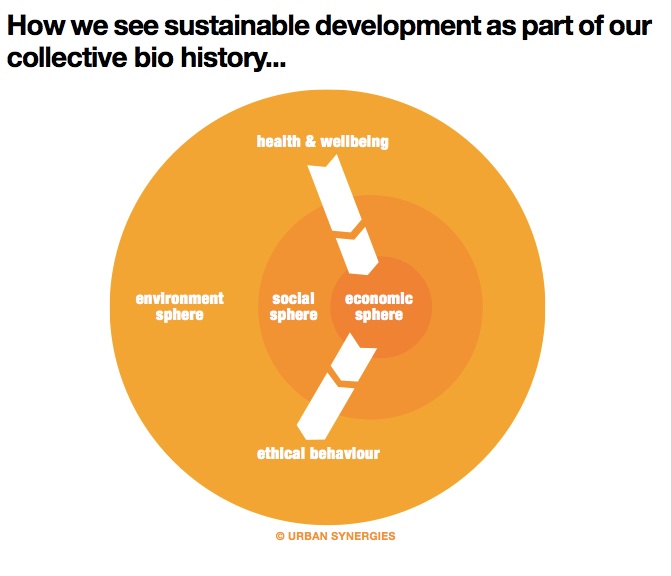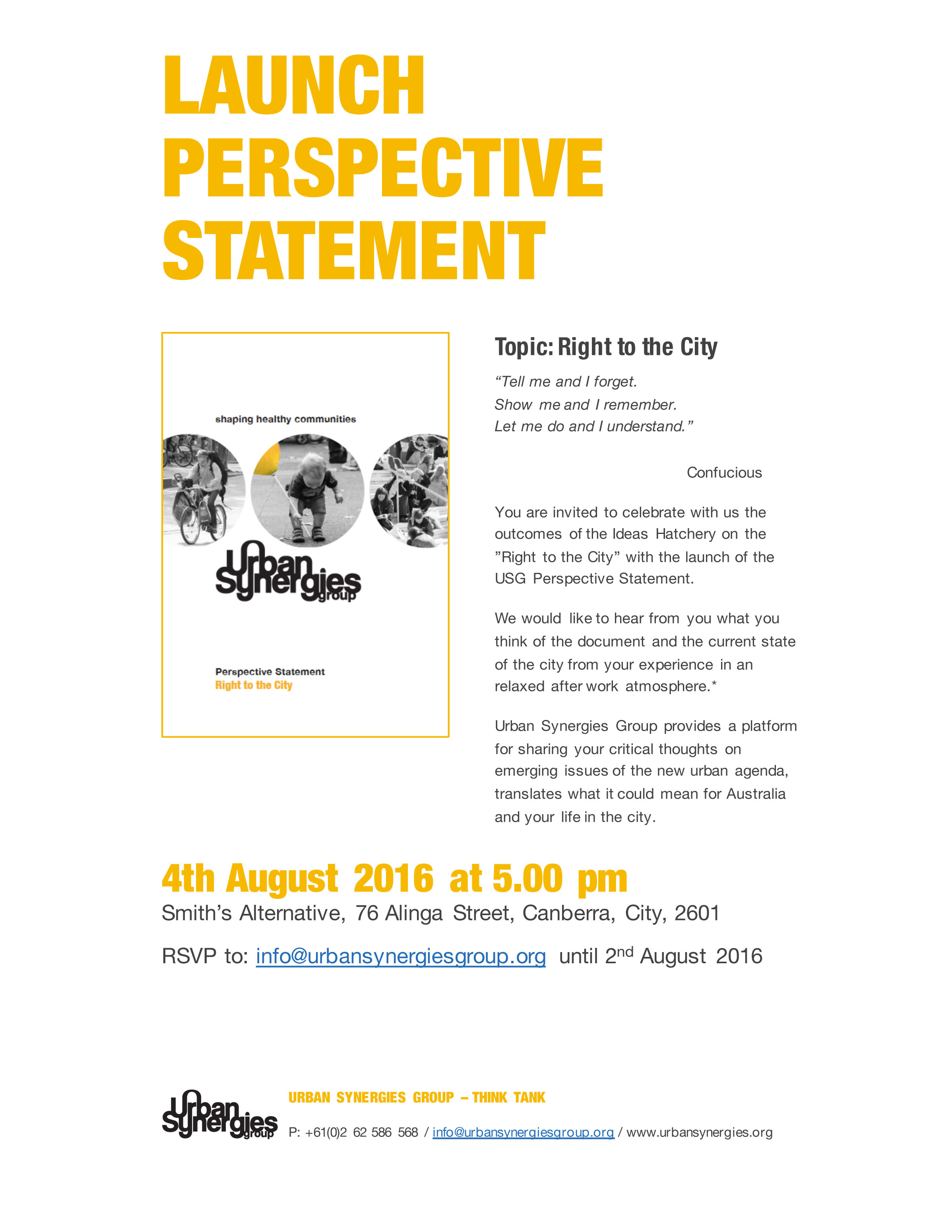
Tag Archives: social planning
Rediscovering Urban Happiness
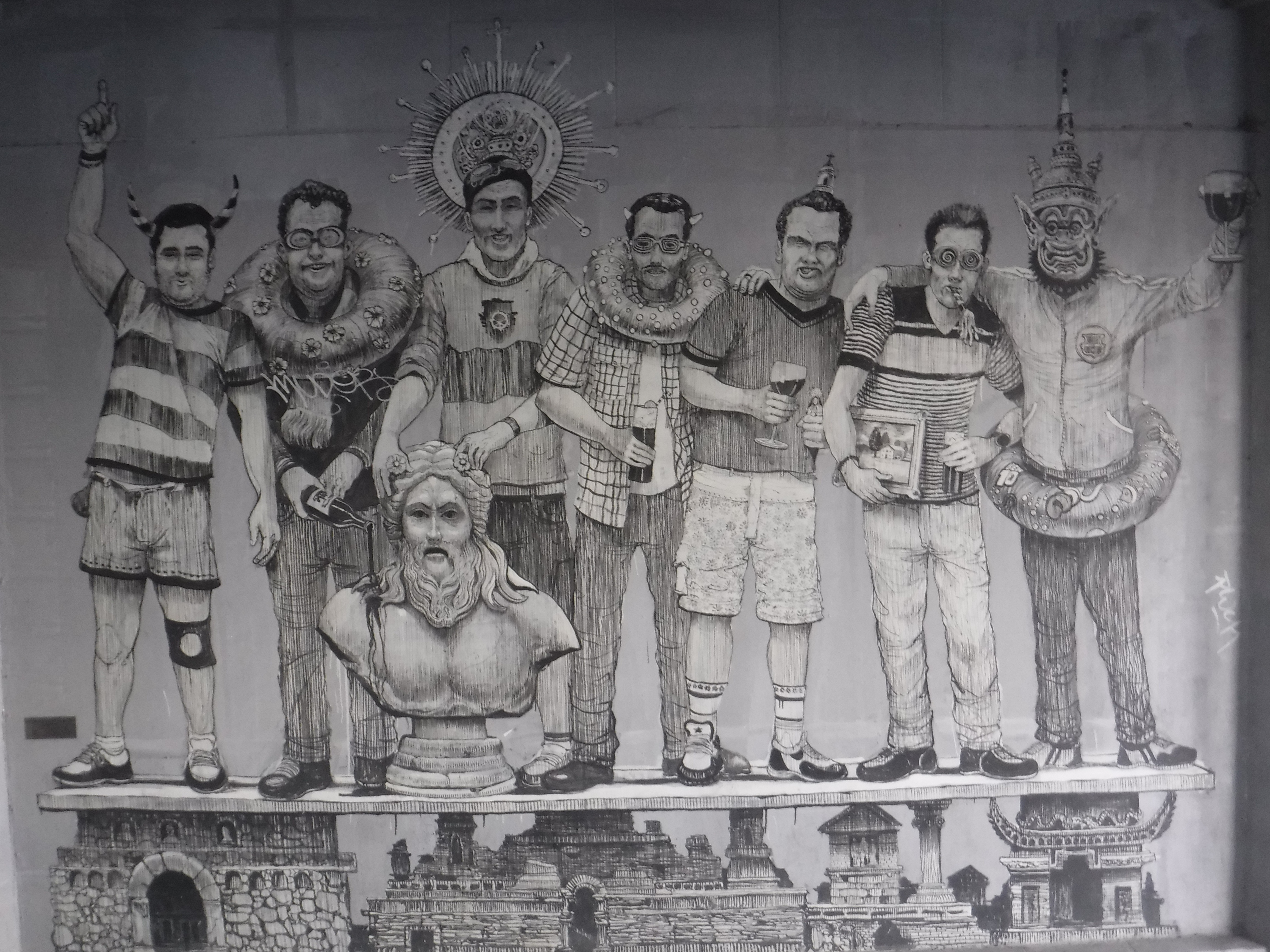
More and more people live in cities. In 2014 the human race reached an urbanisation level of more than 50 percent. If this trend continues by 2050, 66 percent of us will live in cities. At the same time global disease patterns are changing. Depression is on the rise and accidents caused by traffic will increase dramatically.
What could we do to prevent these diseases and incidents from rising. Public transport and bicycling as a preferred form of transport can help. But the majority of urban systems are not designed for it or just starting to invest in it. Optimistically they are still 20 to 30 years behind cities such as Amsterdam, Copenhagen or Münster.
Could there be something out there that could help to reduce or even prevent lifestyle related diseases such as obesity, physical inactivity and depression? Something that fundamentally touches our spirits, uplifts us and contributes to a reduction of traffic accidents? Something that every government and decision maker should be excited about, because its easy, cheap, simple and can become extremely popular if we all commit to it?
If city governments would invest in policies for it, it could transform urban systems and make people’s everyday life more liveable. It would enable a meaningful pathway to improve social, environmental and economic performance.
It will help you to become more creative, relaxed, socially connected and productive. Also it can increase capacity for innovation- simply put- it may achieve better health and well-being outcomes on all scales.
The answer to all that is play. It is an intrinsic induced activity, that constitutes freedom, based on the acceptance of risk in its temporary transformational nature. Play is not structured sport and includes attributes such as spontaneity, curiosity and creative processes that voluntarily occur outside of the ordinary. This purposeless activity is necessary to the human identity as an exploratory pursuit of pleasure and comfort outside of social purpose.
You can have it and older people have certainly experienced it. Children are champions in it, if we let them.
Most people associate play with fun and in theory it can occur anywhere. But why doesn’t it and why are we not playing more often across all ages in every city.
Once we are developed we just stop! Why? For example, in every professional context and learning exercise we now speak of lifelong learning or lifelong development. If we want to seek and embrace development we shall not stop playing.
Evidence suggests that play is not just important for children, but fundamental for their overall developmental capacity. The co- benefits for adults are overwhelming. Contact with nature and other beings has surprising effects on your mental health. Sufficient amount of physical activity in other words walking in a moderate speed can contribute to physical health and well-being.
Each of us has this gift, but when we grow up we are less often engaging in it?
Here is a little story a child has written, that may give you a idea:
“Dear King, I’ve got a question. Must life be so fast? For us it is like that: In the morning I have to get up quickly and then I get quickly dressed. After a fast breakfast, I quickly brush my teeth. Then very quickly we got to go to the kindergarten. In the kindergarten we have to hurry up when dressing and undressing, tidying up also has to be fast and when we are outside we must come inside quickly, so that everyone can eat on time. Then I have to go home in the afternoon quickly. Tuesdays mom drops me quickly of at music lessons and twice a week we go quickly shopping. On Wednesday we have to go quickly over to Grandma Hilde and check whether everything is okay with her. On Fridays we always put quickly the garbage out, and on that day we must also quickly pour water over all the flowers on the balcony. Every evening around 8 pm Mama wants to watch the news very quickly, otherwise she does not know what’s going on in the world. Then I’ll go very quickly to bed and try to fall fast asleep. I ask you: Does life have to be so fast? Because – then it means that it is very quickly over!”
Could it be that in our collective obsession to satisfy our material desires we are so out of balance in the western world?
An ancient African proverb says “It takes an entire village to raise a child”. This takes time and if you care about your children and the next generation – don’t just think about play but engage in it as part of your everyday life.
It is a fun and engaging way to restore the balance and unlocking the benefits of health and well-being – all you need to do is stop seeing it as a waste of time and space. Reconnect with your senses and with your community around you. Otherwise why is it so important for our children?
In conclusion I’d like to invite you to bring play back into your life. All it takes is a bit of time, trust and space.
Author: Gregor H. Mews
Armchair Geoprapher talks to Greg Mews
New Paradigm for Sustainable Development
Since I have devoted my life to Urban Synergies – the team and I worked very hard but took sufficient time to develop a new paradigm for sustainable urban development that includes health and well-being as well as ethical behaviour as a core principle.
Since the “Brundtland Report – Our Common Future” in 1987 and the “Limits to Growth” from 1972 what we commonly understand under “sustainable development” does simply not deliver.
Critical reflection is needed! The latest measurements of IPCC report on global greenhouse gas emissions showing alarming levels and industry is working with a model that does very little or not enough to drive positive change. We know that more that 50 per cent of the world wide population lives now in urban conditions and at the same time cities are the greatest contributor and emitters of pollution threatening human health. Only when we acknowledge our collective bio history, critically reflect and collaboratively work towards a new paradigm we will be able to sustain us.
We are committed! To make a meaningful contribution and to help creating a better world we introduce Urban Synergies healthy sustainable development model.
Should you have any questions relating to our model we would love to hear from you. Feel free to visit our website www.urbansynergies.org
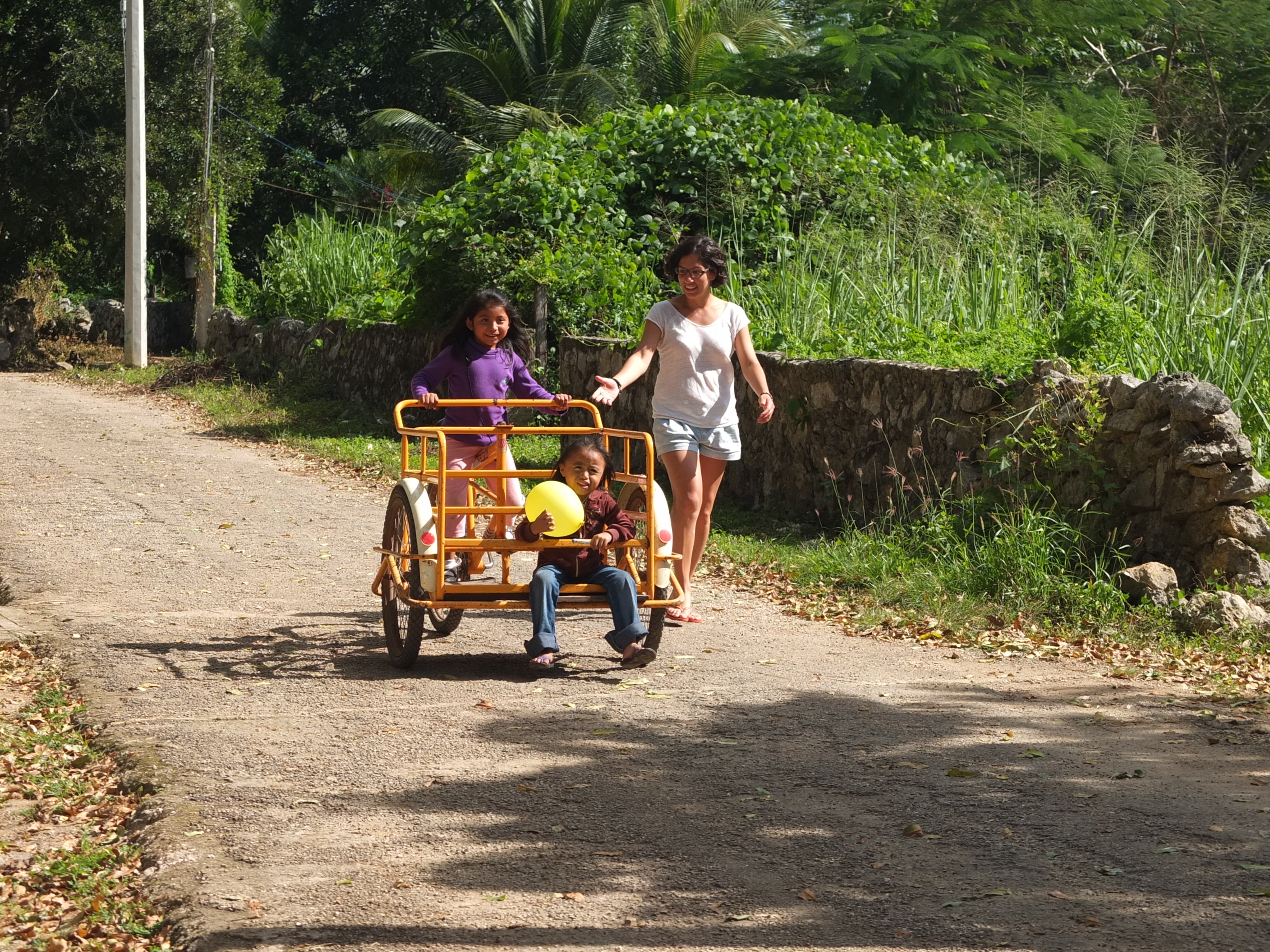
Shaping healthy communities- Urban Synergies study tour in Mexico..learning together without borders! Be part of it and share the love for future generations.
Share the space
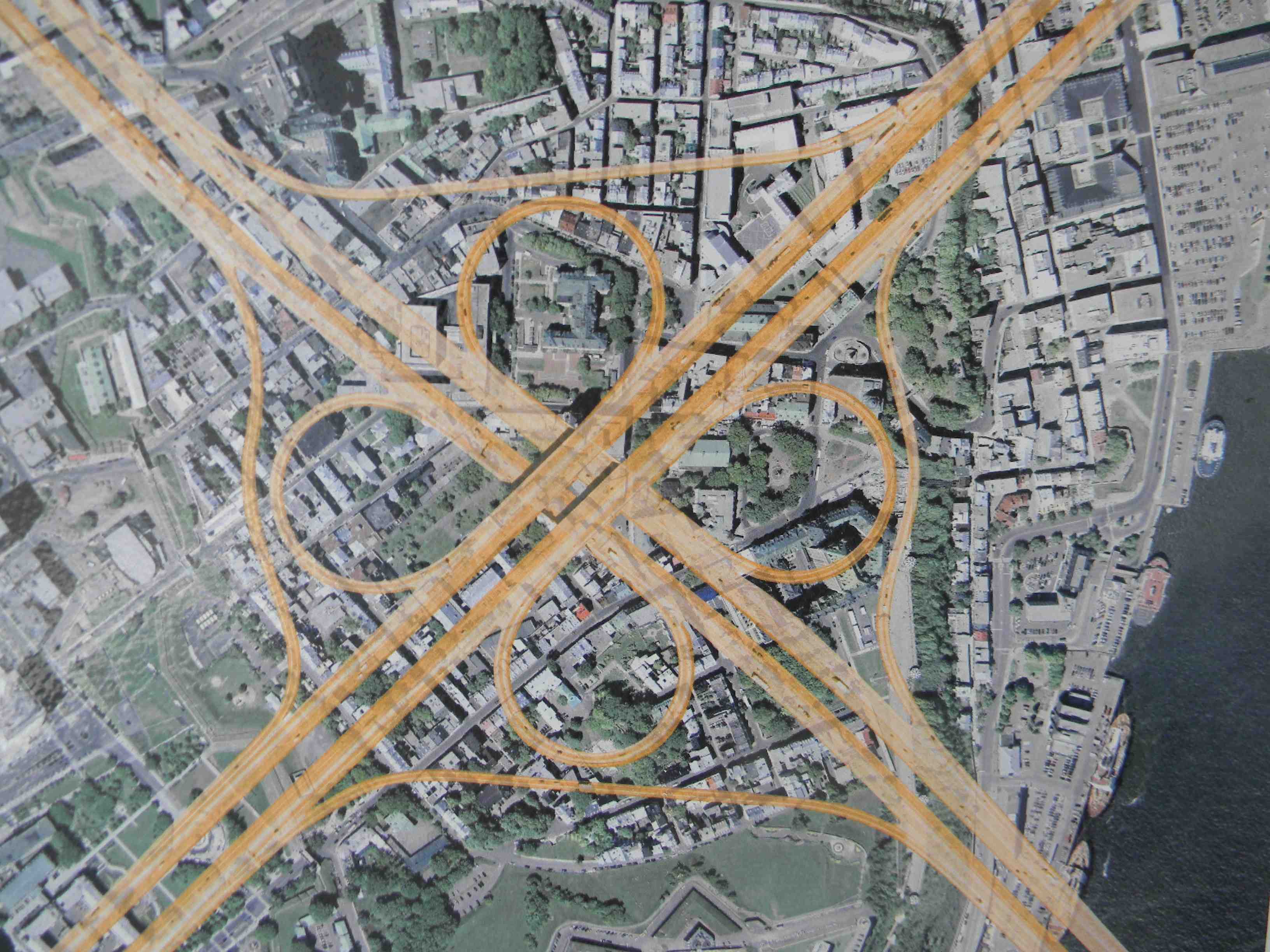 3 cars stop, 24 people cross the street and 7 bicycles cruise along within 10 seconds on a Friday afternoon in Bunda Street, Canberra. I am sitting in a street café overlooking a zebra crossing between the Canberra Centre and City Walk.
3 cars stop, 24 people cross the street and 7 bicycles cruise along within 10 seconds on a Friday afternoon in Bunda Street, Canberra. I am sitting in a street café overlooking a zebra crossing between the Canberra Centre and City Walk.
3 cars, 24 people and 7 bicycles – an interesting modal split that made me think about joining the dots and drawing a picture in regard to appropriate street design with people in mind.
My first dot will be around the latest initiative by the Australian Federal Government, which recently launched the National Urban Design Protocol with the ideal title “Creating places for people”. The document aims to define high quality urban design and to provide a consistent quality framework for future design throughout the country.
My second dot will provide a connection to this initiative and what happens (or still does not happen) on the ground. For example, the National Capital Authority recently announced a delay in rolling out an urban design project for Bowens Crossing until 2014, the year afterCanberra’s Centennary. The reason for the delay is cited as a funding shortfall resulting from major capital maintenance works to be undertaken on Scrivener Dam. It is unfortunate to see projects like Bowen Crossing postponed The Federal Government and theCanberracommunity should demand higher priority for quality urban design projects and the improvement of local amenities.
My third dot will be the apparent disconnect between budget reality, community expectation and future budget projections. Funding for urban planning and design projects will become increasingly scarce as competing priorities place pressure on the ACT Budget. I’d like to invite you to bear in mind, for example, that the Australian Capital Territory (ACT) Health Directorate budget is increasing by 11 per cent per annum and in a ‘business as usual’ scenario will, according to Access Economics, consume the entire ACT Budget in the medium to long term.
Let’s start joining the dots and attempt to draw a picture. On the one hand, we are creating a strategic framework for better quality design to meet community expectations. On the other hand, we will have in the long run less funding to realise those expectations.
The picture that came out of connecting these dots is not good one. Here is my initial attempt to rescue the drawing to ensure quality spaces for all people.
a) I’d like to start by highlighting that there is no silver bullet solution to what is becoming an increasingly complex problem.
b) Education is key. In order to resolve a complex design issue we need to have a certain amount of common knowledge around the issue.
c) Potentially competing interests need to work hand in hand with a collaborative spirit to achieve designs that will benefit all members of the community.
d) Be creative, be open-minded and think outside of the square. There are no wrong questions.
Drawing a short initial exemplar illustration onBunda Streetas a shared space:
a) The advantages of making streets more people friendly are potentially far-reaching, encompassing environmental, social, economic and health benefits. Most academics and leading practitioners in various fields call for an integrated and holistic approach to issues such a climate change, non-renewable resources, food access as well as the obesity epidemic in Australia. A triple bottom line approach is necessary and needs more than just a single tool.
b) What is a shared space? www.dtf.gov.uk/publications/ltn-01-11
What is the Urban Design Protocol? www.urbandesign.gov.au
What are the benefits of making streets more walking and cycling friendly? www.heartfoundation.org.au/SiteCollectionDocuments/GoodforBusinessFINAL_Nov.pdf
What do most stakeholders in the ACT think about creating better places for people? www.healthyplaces.org.au/userfiles/file/News/act_activelivingreport.pdf
What has the ACT Government committed to do in relation to walking and cycling? www.transport.act.gov.au
What has the ACT Government already done? For a start it signed on 1 November 2010 the International Charter for Walking. www.walk21.com/papers/international520Charter%20for%20Walking.pdf
Of course every reader should feel encouraged to research further pending their level of interest.
c) Call out for a workshop that brings all parties together in a comfortable and neutral environment and share stories (personal or evidence based) about the importance of having equal access to good quality spaces for all members of the community in Canberra Civic.
d) Some creative ideas for Bunda Street as a high quality shared space:
–> Consider innovative pavement design using local recycled materials;
–> Use intelligent landscaping (trees, planting) to provide a green, balanced environment that can protect the space from the heat island effect.
–> Ask local stakeholders to commit to maintaining the new amenity. In addition to enjoying well maintained spaces, homeowners stand to benefit economically from quality urban design projects in their local neighbourhoods.
–> Think about human scale and imagine walking with a kid’s eye through the space. As an ideal outcome you should feel comfortable to move freely in the space and be able to communicate easily with other people.
–> Have in mind that we will have 20 + per cent elderly people by 2030 and consider the needs of disadvantaged groups.
–> The place should be considered as an open living room where people can celebrate, communicate and interact 24/7.
–> Think even of interesting signage that invites users to change their behaviour. This could be by having a big welcome sign saying, “You are entering the city’s open living room”.
e) Recently the South Australian Government announced the creation of an independent Commissioner for Integrated Design. Such a person could ideally provide the platform and framework of collaboration and facilitate the dialogue needed to achieve a satisfactory and truly democratic outcome.
3 cars stop, 24 people cross the street and 7 bicycles cruise along within 10 seconds on a Friday afternoon in Bunda Street, Canberra.
Be an urbanist and share the space!
Healing Canberra – by taming the cars and creating a solid pattern language
If we want to heal the Canberra pattern language we need to have a healthy balance between providing sufficient area for development within the existing footprint (commercial viability), efficient and convenient circulation and high quality social spaces.
The wound is deep!
The recent Hawke review of the ACT public service indicated that Canberra is 10 times less dense than Melbourne and Sydney, is one of the lowest density cities worldwide and less than one quarter of the ACT is suitable for development. The potential for significant urban redevelopment is apparent and key to enable efficient and convenient circulation systems.
What do I mean with that? Efficient movement allows all people to move from A to B in a fast way. However, convenient also includes what happens between A and B. So far Canberra has been successful in “perceived efficiency” to move people from A to B via cars. The implication on equal access and holistic safety to this form of movement by the population with a youth and aged perspective is concerning. Bus use is still far beyond being convenient for all members of the community and as the Ottawa example shows requires long- term support.
Car use just creates convenience for a small number of people per vehicle and degrades the space between A and B to a “desert quality” or when have you seen last time a good crowed of people having quality time on a medium stripe.
In other words people had for a very long time a very exclusive way of moving in space, which resulted in a 30 per cent increase in road infrastructure that needs to be maintained, not even to mention impacts on human health and their environment through air pollution, heat island affects, amount of sealed surfaces etc.
In search for a right medicine!
In the medium term future cars won’t disappear, but we need to tame the cars and change the pattern language in the city if we are serious live in a sustainable and healthy Canberra.
The street pattern and urban structure is important to determine the pattern of movement, setting the parameter for subsequent development and in contributing to an urban character.
Introducing a stronger movement hierarchy, plan under the banner of “city of short distances”, which allows people meet most of they needs in short walking/ cycling or public transport distances and maximise the opportunities of social spaces in between.
The Department for Transport in the UK adopted in 2007 a new movement hierarchy for their “Manual for streets”:
- People;
- Bike users;
- Public transport;
- Special service vehicle, car share and taxis;
- Private cars.
The shape and size of an urban block is important in conjunction with basic typologies/ codes/ rules about physical parameters. Innovative and creative precinct plans can address these issues and are able to address social spaces that benefit all members of a community.
Indicator for getting healthy!
The greatest indicator of a disappearing wound is when you start seeing a wide range of people using urban spaces up to 24/7- simply more people living, ageing and socialising locally in very safe, pleasant and child friendly environment.
Be part of the healing process!
The ACT Government has released two key strategies for public comments. The ACT Planning strategy will set the direction around Canberras future pattern language and other urban design challenges. The Transport for Canberra strategy aim is to tame the car and providing a real opportunity to create equity in transport. The strategies can be found under http://www.timetotalk.act.gov.au/time-to-talk/. Make a difference – be an urbanist!
Places we need
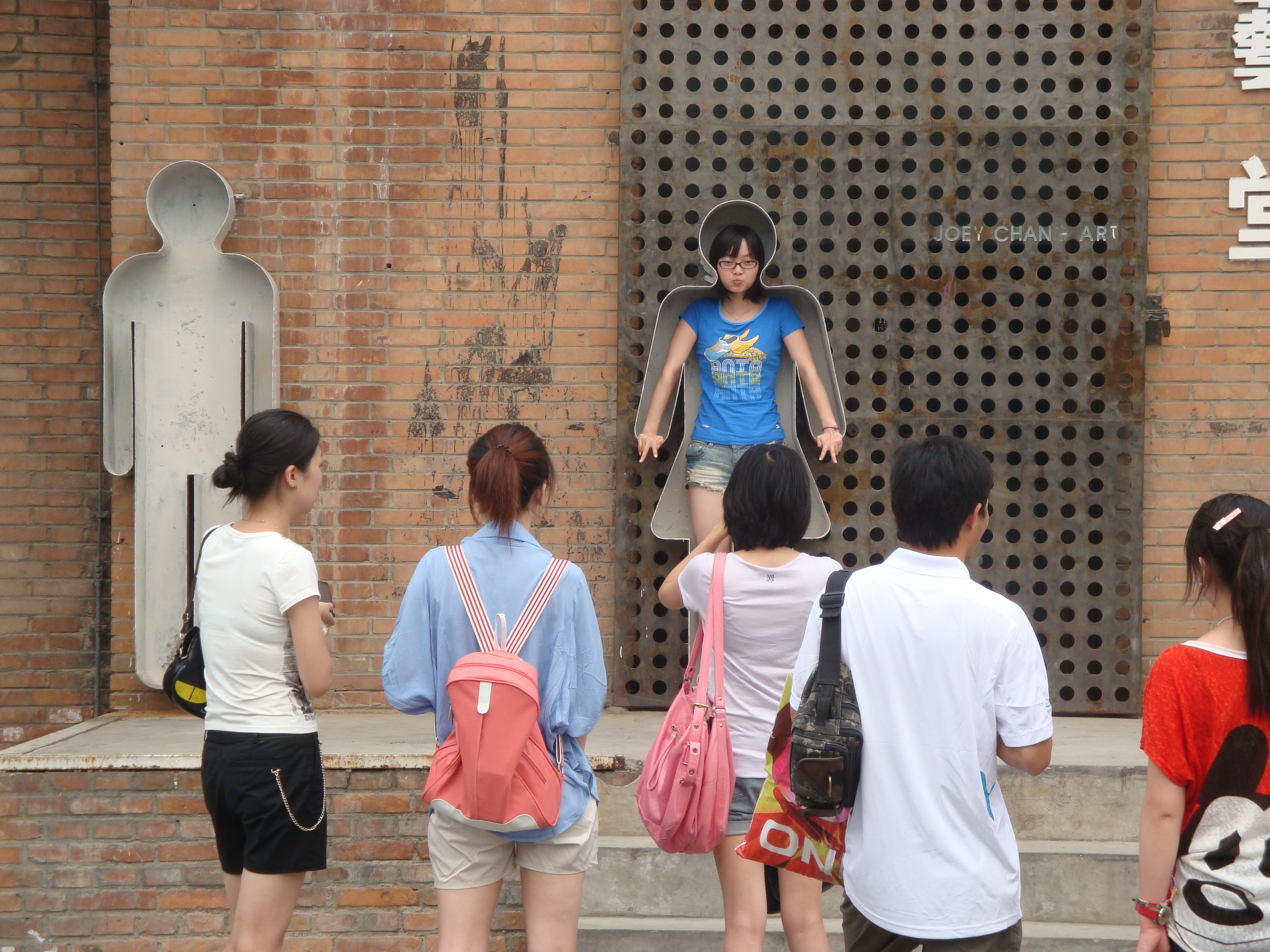 What connects people in cities and what makes cities places where you want to be? That is a question I’ve been asking myself since a long time.
What connects people in cities and what makes cities places where you want to be? That is a question I’ve been asking myself since a long time.
Most urban dwellers consider themselves as individuals, which want to be unique in material manifestations such as clothing, goods and mindset.
However, cities play the unique role in terms of catering for everybody’s needs in the same an equal manner. A city provides spaces for the young and old members of the community as well as for disadvantaged groups.
Translating these individual needs into the public realm –the space that should provide spaces for all of us in a city – can enable liveable places. In liveable spaces everybody can celebrate their uniqueness on many places and it takes just a couple of simple mechanisms to achieve that.
1. A decent population density that can support economic viable use of infrastructure.
2. Be nice to people by providing sufficient spaces for them.
3. Design that space for the people by considering light, noise, scale and imageability.
For all the readers who may find that to abstracts please let me describe this through an simple comparison (metapher).
A person sits in a coffee shop, reads talks, enjoys good food and company. Overall most people feel quite nice once they are in them. Why, because all design components have been achieved. However, it should be noted that you need financial effort to benefit from them. First of all coffee shops are spaces for people, the scale of the establishment appears comfortable, leaves spaces for some privacy and they are considered to be very safe. The light is just right – not to strong and not too dark and the noise comes usually from other people and gentle music in the background. This noise level above 35 dbl enables a feeling for social inclusion and can help to reduce depression. Imageability can make a place unique.
Artworks, interesting structural elements, vegetation, view connections etc. are tools to allow individual imageability. Spaces that have special sense of place have some unique qualities that cannot be repeated on a large scale – the same in coffee shops. Just imagine all coffee shops would have the same artwork in them.
All these four elements should be possible in a liveable and healthy city. But even more important a coffee shop could not function without a good crowed that lives near by to fill it with live and the same rule applies to the city.
Canberra has the potential to have many of these high quality places for all members of the community if we are prepared to accept and support on our individual level the fact that we need a population higher density. This will allow Canberra to become a city for people – a healthy and more sustainable place to live it.
Other cities around the globe are already committed to create sustainable and liveable place for their people. The city of London started to ban cars in the city and applied mechanism to reduce car speeds. Copenhagen is introducing more and more spaces for active transport and is increasingly blocking spaces for cars. Freiburg new developments are people oriented developments, that are environmentally, economically and socially sustainable. All these cases have one huge advantage – most individuals accepted higher density as the opportunity to create a better future for the coming generations so that they have even better and more liveable spaces to live in.
Visions for Canberra
Today I was walking through the bookshelves, a magazine titled Cities of Tomorrow – envisioning the future of urban habitat caught my eye and made me think.
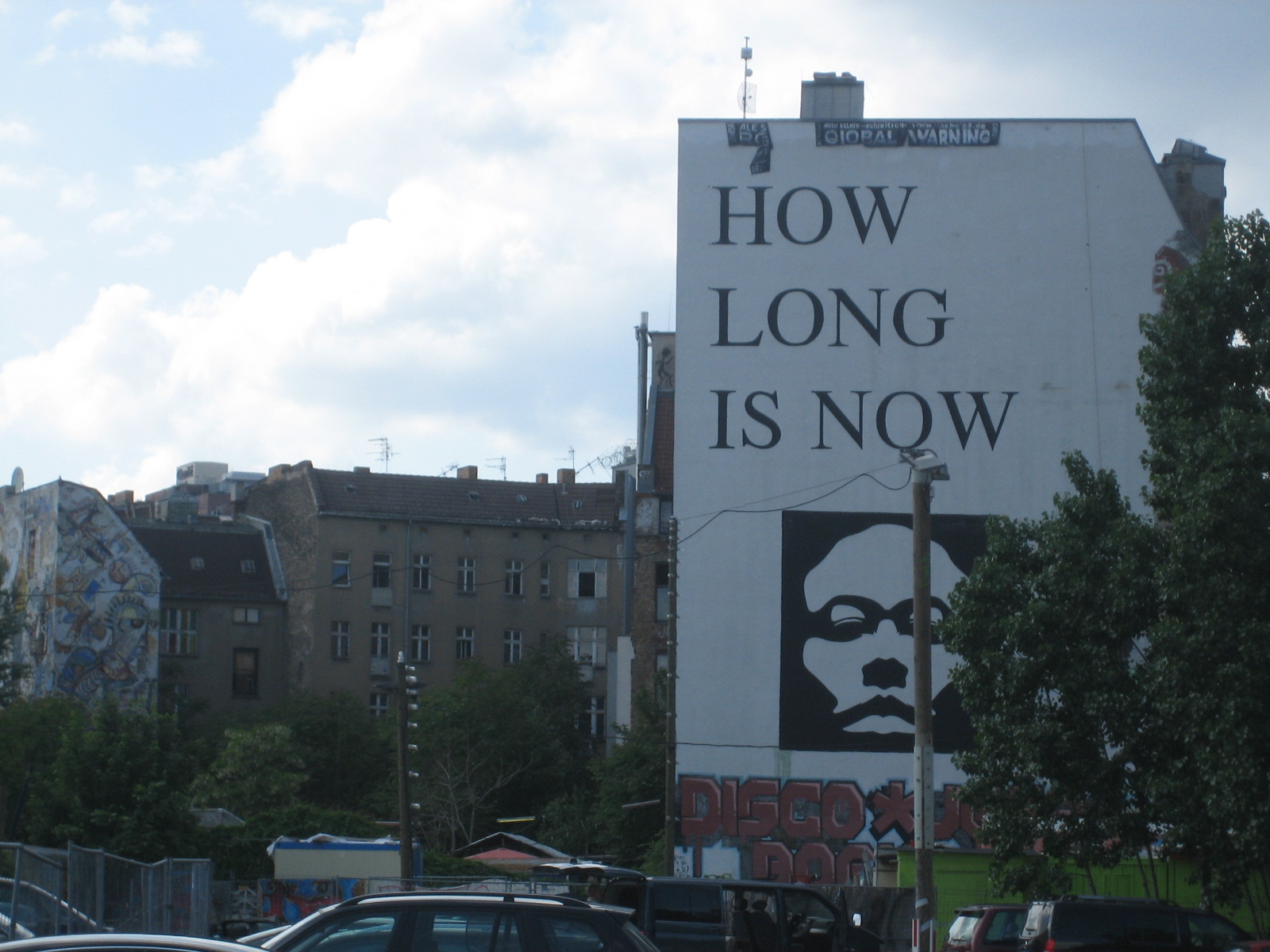 Since cities exist as planners, architects and designers visioned urban aspirational strategies. Some of these visions are more and some less radical or scary. Internationally we can look back to a long history of vision starting with Georges Eugene Hausmann modernised Paris, Edgar Chambless Road towns approach in Baltimore to Washington, Le Courbusier’s proposal of the Radiant city based on CIAM principles, Richard Neutra with his Rush City and even the creation of Lucio Costa and Oscar Niemeyer with Brasilia as a planned city.
Since cities exist as planners, architects and designers visioned urban aspirational strategies. Some of these visions are more and some less radical or scary. Internationally we can look back to a long history of vision starting with Georges Eugene Hausmann modernised Paris, Edgar Chambless Road towns approach in Baltimore to Washington, Le Courbusier’s proposal of the Radiant city based on CIAM principles, Richard Neutra with his Rush City and even the creation of Lucio Costa and Oscar Niemeyer with Brasilia as a planned city.
Hold on – then there is also the fine capital of Australia, namely Canberra, where Walter Burley Griffin designed this ideal city. A city for up to 75,000 people with grand boulevards to enhance high quality vistas and green spaces, a public transport system that enables convenient travel options through the city as well as a leasehold system that ensures equity in access to housing. As we all know. Canberra has not become an ideal city and is still emerging. Planning paradigms, political climate and community engagement has changed. Like all these realised visions around the globe,Canberra adopted contemporary ideas at the time and tried to adopt world’s best practice.
Since I arrived in the ACT I have got the feeling that the planning profession suffered significantly and is under criticism from all directions. I think this criticism it is not deserved. Compared to other countries Australia has a huge shortage of planners and this is reflected in the number of planners per capita. Through the creation of a political neo-liberal environment, the planning profession experienced a systematic de-skilling and has been terribly under resourced for many years. Some well-known examples included the National Capital Authority, which has had extensive funding cuts over the last decade and future is in question. ACTPLA will now emerge with a potential loss in responsibilities as part of the new sustainable development directory. How can one perform well under very constrained environments? You wouldn’t throw a single doctor into a hospital full of very ill patients, let him know that he has to treat and cure all of the people in it, and without the use of medicine, tools and infrastructure necessary to do so.
Urban and Regional planning is an exciting profession and, in my experience, appears to generate interest and discussion among a good cross-section of the community.
Most people agree on the vision for Canberra to be a vibrant, sustainable and healthy city that is a shining examplar in the 21st century.
Recently the University of Canberra in collaboration with ANU created a joint Centre for Urban and Regional Futures that offers a good selection planning courses. This is an ideal opportunity for the people of Canberra to follow this invitation to take up the fulfilling challenge, study Urban Planning and to make a difference.
Good skilled planners are able to harness this information and try to translate that into a reality that maximises opportunities for all members of the community. Let’s create master plans and a vision for Canberra that adequately reflects the community values, acknowledges the achievements of the past and builds on the professional expertise that good skilled planners bring on the table. After all, the built environment informs us of who we are, where we came from and where we are about to go in the future.
Let’s hope we are heading in the right direction!
